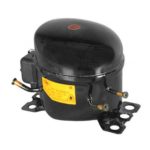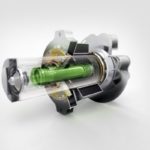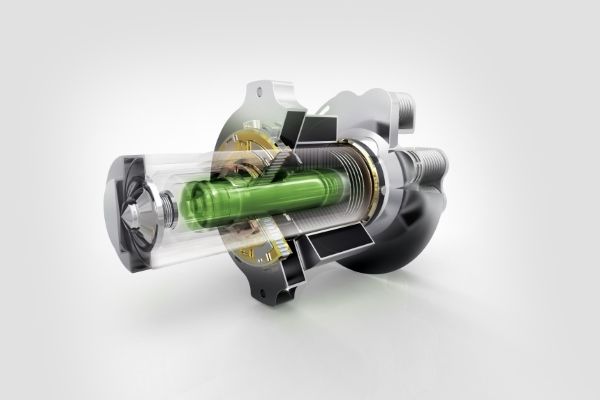How to check a refrigerator compressor
The compressor is a key component of any refrigerator. If it fails, it will affect the operation of the unit. A breakdown threatens the refrigerator’s complete failure to function. Therefore, it is worth trying to check the compressor yourself.
The content of the article
We check the refrigerator compressor: resistance, relay, pressure check
It is imperative to check the resistance. If there is a malfunction, there is a possibility of receiving an electric shock. You can check the compressor using the following parameters:
- resistance;
- pressure;
- current.
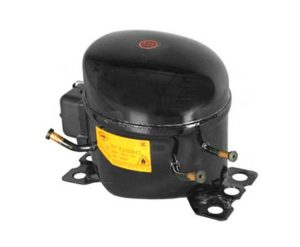 If the winding is damaged, voltage surges are observed that can transfer to the housing. To check the resistance, it is recommended to measure it in each of the 3 contacts, including the body of the product. Choose areas without paint. If there is no jump or damage, an infinity sign will appear on the screen of the diagnostic device.
If the winding is damaged, voltage surges are observed that can transfer to the housing. To check the resistance, it is recommended to measure it in each of the 3 contacts, including the body of the product. Choose areas without paint. If there is no jump or damage, an infinity sign will appear on the screen of the diagnostic device.
It is recommended to diagnose pressure using a pressure gauge. It is necessary if there are indicators of structural failure, but measuring the resistance did not clarify anything.
It is important to connect everything securely and correctly. The readings are taken with the compressor turned on. You can get the following results:
- A value of 6 atmospheres appears on the screen, and the indicator begins to increase.This indicates the functionality of the product.
- The pressure reading is below 6 and begins to decrease. Which means you need to replace the pressure housing.
It is important to ring the starting relay, which allows you to find out whether current is flowing to the engine. You will need a multimeter with clamps. For the purity of diagnostics, the basis of the study should be a working relay. It is connected to the compressor cavity. Then one of the wires is clamped with pliers.
The indicator depends on the engine power. If it is about 120 W, the display will show a result of 1.1–1.2 V. If the power is higher, about 140 W, then 1.3 V will appear on the screen. This indicates that the relay is working. The appearance of other data indicates the presence of problems.
Attention! When starting self-diagnosis, it is important to be careful and act carefully so as not to harm yourself.
Compressors in refrigerators
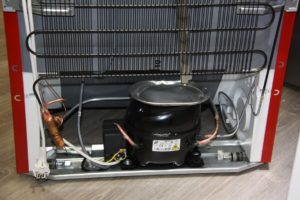 The compressor is an important component. If there are problems with it, the device will stop working. Therefore, to identify the causes of failure, it is important to understand how the compressor is designed and how it works.
The compressor is an important component. If there are problems with it, the device will stop working. Therefore, to identify the causes of failure, it is important to understand how the compressor is designed and how it works.
How do compressors work in domestic refrigerators?
This is the main part of any refrigerator. It looks like a pump that pumps refrigerant through the pipes. It removes hot air from the main part of the device.
It is the compressor that most often fails and leads to problems in the operation of the refrigerator. It is often called the heart of the device. It plays one of the key roles in the correct, good functioning of the product. With its help, steam is pumped and placed in the condenser. This is where the refrigerant makes it liquid.
The principle of operation of the compressor in the refrigerator
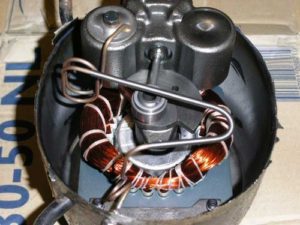 Refrigeration equipment requires refrigerant to function properly. Freon is most often used. It, moving along a closed circuit, changes its temperature indicators. Many parts of the design help him do this, including:
Refrigeration equipment requires refrigerant to function properly. Freon is most often used. It, moving along a closed circuit, changes its temperature indicators. Many parts of the design help him do this, including:
- A compressor that creates the required pressure.
- An evaporator that removes heat from the refrigeration chamber.
- A condenser that releases heat to the outside.
The listed actions are dynamic. The compressor operates thanks to an electric motor. It is located inside the body part. For refrigerators, a piston type compressor is used, sealed.
The basic principle of operation of the device is to release internal heat to the outside world, which allows the air in the chamber to cool.
Diagnostics and possible causes of compressor malfunction
Among the possible malfunctions and causes of malfunction of this part of the equipment, it is worth noting:
- Doesn't buzz or start. There are several reasons for this. The relay circuit may be open or there is no voltage, too low. Then you need to check the indicated indicators. The fuse may have blown.
- It hums, but won't start. The thermal relay is activated. It is necessary to check whether the electrical connections are made correctly. The starting capacitor may be causing the problem. Failure to start is sometimes due to the start relay not activating or a short circuit in the motor winding.
- After starting, the starting winding does not turn off. This can be caused by low refrigerant pressure or a faulty condenser. Errors in electrical circuit installation can lead to similar consequences.
- It works, but the thermal relay periodically trips. May be due to excess current due to faulty electrical connections.Low voltage sometimes leads to similar problems.
- Works with short cycles. Possibly due to malfunctions of the thermal field, or to the operation of the high pressure switch. This can be caused by the presence of air or lack of cooling.
- Works with long cycles. This can be caused by clogged refrigerant condenser or icing on the evaporator.
Tips for checking your refrigerator compressor yourself
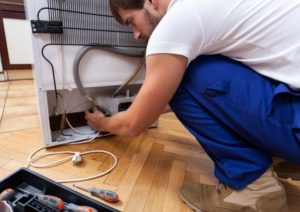 If you have any problems with the operation of your refrigeration equipment, you can try to diagnose it yourself. You must act carefully. Remember safety precautions. When using testing devices, it is important to make sure the connection is correct several times.
If you have any problems with the operation of your refrigeration equipment, you can try to diagnose it yourself. You must act carefully. Remember safety precautions. When using testing devices, it is important to make sure the connection is correct several times.
If a malfunction is detected, it is recommended to contact a specialist for repair. Trying to fix the problem on your own may make the situation worse. Therefore, you should not carry out complex repairs yourself. Especially if you are not sure of the correctness of the diagnostic results. Otherwise, you will have to purchase new equipment due to the complete breakdown of the old one.

